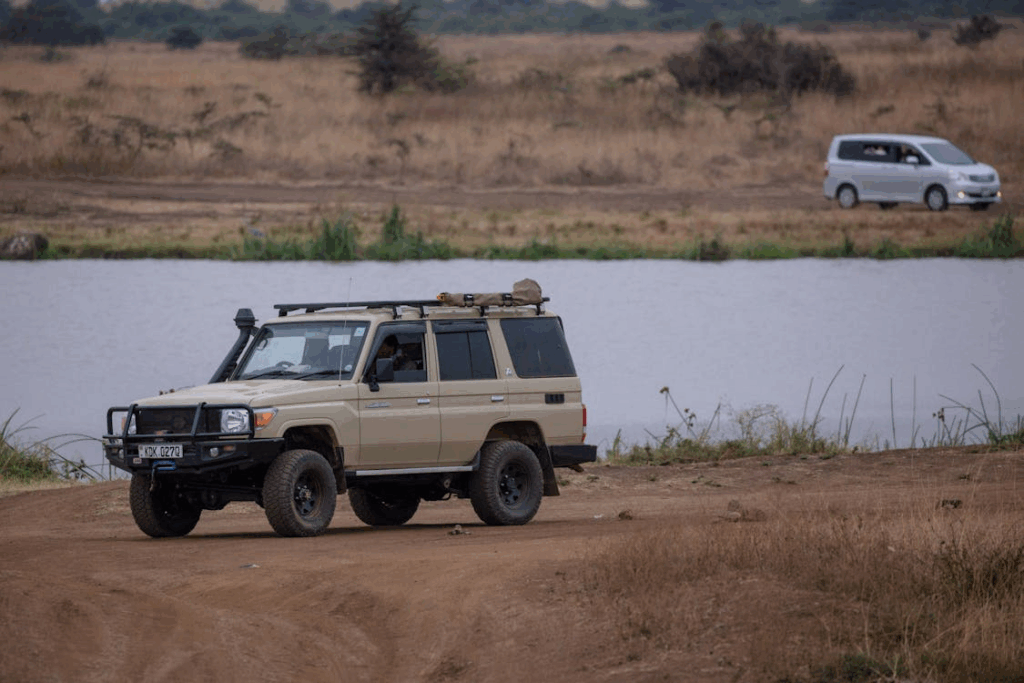When you start piecing together a touring rig, you quickly realise it’s a bit like building a house—every part needs to do its job if the whole thing’s going to stand up to the elements. The suspension carries the weight, the tyres grip where tarmac turns to track, and the bull bar? That’s not just a lump of steel bolted to the front.
A well-designed bull bar becomes the tie-in point, the bit that pulls the whole vehicle setup together. It protects, supports, and gives you options for adding the extras that make a rig ready to roam far and wide.
| Important: Compatibility is crucial when installing a bull bar. If you drive a Toyota Hilux, for example, you’ll need a Hilux bullbar. |
The Structural Backbone of a Touring Setup
At first glance, a bull bar might look like little more than a crash buffer, but once you dig into the engineering, you see why it’s often the backbone of a rig. A bull bar ties directly into the chassis rails, and that connection does more than carry its own weight. It redistributes impact forces across the frame, reducing the chance of concentrated stress that can bend or crack a vehicle’s front end.
On top of that, the bull bar sets the stage for accessories. Recovery points, winches, and antennas don’t just hang off anywhere, right? They need a structurally sound anchor. Steel bars are usually the go-to here because of their superior yield strength and fatigue resistance, though alloy options keep the weight down.
The trade-off is simple: alloy brings better balance for lighter vehicles, while steel handles brute force. Either way, the metallurgy matters, because once you start adding serious gear, that bar’s got to hold its ground.
Protection That Goes Beyond Collisions
Most folks picture a bull bar stopping a roo in its tracks, but that’s really just part of the story. Out on a narrow bush trail, a bar is constantly fending off low scrub, deflecting branches, and taking the brunt of rocks that tyres flick up. It’s a silent shield, keeping the radiator, intercooler, and front panels out of harm’s way.
Geometry is the clever bit. A bar that hugs the body too tight might look neat in the driveway, but on a rutted track it can limit your approach angle. A well-designed bar tapers and sweeps in ways that let the tyres climb ledges without snagging the corners of the bumper. That difference is the line between clearing an obstacle cleanly or getting hung up nose-first.
Mounting Central: Turning the Bull Bar Into a Utility Hub
More than offering protection, the bull bar stands as a platform. Engineers design these things to carry gear that makes life easier on the road and safer off it. These include:
- Driving lights and light bars– The mounting height on a bull bar helps project light across a greater spread, improving depth perception on pitch-black backroads.
- Winches– A reinforced bar routes winch forces into the chassis, preventing twist or stress fractures. Without that engineered path, pulling a stuck vehicle can wreak havoc on weak mounting points.
- UHF antennas – Bull bars give an ideal line-of-sight mount, and the rigid support reduces vibration that can knock reception out.
- Recovery points– Built-in points on a bar are stress-tested and rated, unlike bolt-on eyelets that can shear when under heavy load.
When you add it up, the bar becomes the utility hub of the rig. It’s the place where strength meets practicality. Without it, you’re scrambling for somewhere solid to hang your gear.
Weight, Balance, and Suspension Considerations
Now, nothing comes for free. Slap a steel bull bar on the nose of a wagon, and suddenly you’ve shifted its weight balance. That extra mass up front puts the front springs under constant compression. Left unchecked, you’ll see sagging suspension, altered steering geometry, and tyres wearing unevenly across the tread.
This is where proper suspension tuning enters the picture. Constant load springs are ideal when you’re always carrying that extra weight—bar, winch, lights, the lot. Variable rate springs, on the other hand, give a softer ride when unladen but stiffen as the load increases.
The Role of Bull Bars in Vehicle Recovery
Imagine you’ve eased into what looked like a firm track, only to sink axle-deep in mud. Tyres spin, the chassis bottoms out, and you’re going nowhere fast. A mate lines up with a snatch strap, but here’s where the bull bar earns its stripes.
When the pull comes, the force is spread evenly across the frame, reducing the risk of bending rails or tearing welds. Contrast that with using a tie-down loop or bumper mount, and you can see why the bar’s design is critical. It’s recovery done safely, without turning hardware into dangerous projectiles.
Styling, Aerodynamics, and Driver Visibility
Gone are the days when bull bars were little more than square frames bolted on the front. Modern designs consider aerodynamics, airflow, and visibility. Angled edges cut drag, recessed housings integrate seamlessly with headlights, and careful shaping keeps sightlines clear from the driver’s seat.
Finishes matter too. Powder coating not only looks sharp but also resists UV fade and corrosion, a must when rigs spend their lives under harsh sun and salty air. A bar that balances strength with good looks shows that engineering can be both functional and stylish.
Bull Bars: The Cornerstone of a Rig That’s Ready for Anything
Building a touring rig is about shaping a vehicle that can handle whatever comes its way. The bull bar ties the whole system together, protecting the front end, carrying the gear, balancing the weight, and making recovery safe. It’s the kind of addition that turns a standard fourby into a rig that’s truly prepared for the unknown. And when the track throws up its worst, you’ll be glad it’s there, holding the line at the front.
Read More:



